#d0d1cf Color Information
In a RGB color space, hex #d0d1cf is composed of 81.6% red, 82% green and 81.2% blue. Whereas in a CMYK color space, it is composed of 0.5% cyan, 0% magenta, 1% yellow and 18% black. It has a hue angle of 90 degrees, a saturation of 2.1% and a lightness of 81.6%. #d0d1cf color hex could be obtained by blending #ffffff with #a1a39f. Closest websafe color is: #cccccc.
-
- R 82
- G 82
- B 81
-
- C 0
- M 0
- Y 1
- K 18
● #d0d1cf color description : Grayish green.
#d0d1cf Color Conversion
The hexadecimal color #d0d1cf has RGB values of R:208, G:209, B:207 and CMYK values of C:0, M:0, Y:0.01, K:0.18. Its decimal value is 13685199.
| Hex triplet | d0d1cf | #d0d1cf |
|---|---|---|
| RGB Decimal | 208, 209, 207 | rgb(208,209,207) |
| RGB Percent | 81.6, 82, 81.2 | rgb(81.6%,82%,81.2%) |
| CMYK | 0, 0, 1, 18 | |
| HSL | 90°, 2.1, 81.6 | hsl(90,2.1%,81.6%) |
| HSV (or HSB) | 90°, 1, 82 | |
| Web Safe | cccccc | #cccccc |
| CIE-LAB | 83.713, -0.705, 0.862 |
|---|---|
| XYZ | 60.073, 63.516, 68.123 |
| xyY | 0.313, 0.331, 63.516 |
| CIE-LCH | 83.713, 1.113, 129.28 |
| CIE-LUV | 83.713, -0.459, 1.424 |
| Hunter-Lab | 79.697, -4.921, 5.108 |
| Binary | 11010000, 11010001, 11001111 |
Color Schemes with #d0d1cf
Alternatives to #d0d1cf
Below, you can see some colors close to #d0d1cf. Having a set of related colors can be useful if you need an inspirational alternative to your original color choice.
#d0d1cf Preview
This text has a font color of #d0d1cf.
<span style="color:#d0d1cf;">Text here</span>This paragraph has a background color of #d0d1cf.
<p style="background-color:#d0d1cf;">Content here</p>This element has a border color of #d0d1cf.
<div style="border:1px solid #d0d1cf;">Content here</div>.text {color:#d0d1cf;}.background {background-color:#d0d1cf;}.border {border:1px solid #d0d1cf;}Shades and Tints of #d0d1cf
A shade is achieved by adding black to any pure hue, while a tint is created by mixing white to any pure color. In this example, #020202 is the darkest color, while #f7f7f7 is the lightest one.
-
#020202
#020202rgb(2,2,2) -
#0c0c0c
#0c0c0crgb(12,12,12) -
#161615
#161615rgb(22,22,21) -
#1f201f
#1f201frgb(31,32,31) -
#292a28
#292a28rgb(41,42,40) -
#333432
#333432rgb(51,52,50) -
#3d3e3c
#3d3e3crgb(61,62,60) -
#474845
#474845rgb(71,72,69) -
#51524f
#51524frgb(81,82,79) -
#5a5c58
#5a5c58rgb(90,92,88) -
#646662
#646662rgb(100,102,98) -
#6e706c
#6e706crgb(110,112,108) -
#787a75
#787a75rgb(120,122,117)
-
#82847f
#82847frgb(130,132,127) -
#8b8e89
#8b8e89rgb(139,142,137) -
#959793
#959793rgb(149,151,147) -
#9fa19d
#9fa19drgb(159,161,157) -
#a9aba7
#a9aba7rgb(169,171,167) -
#b3b4b1
#b3b4b1rgb(179,180,177) -
#bcbebb
#bcbebbrgb(188,190,187) -
#c6c7c5
#c6c7c5rgb(198,199,197) -
#d0d1cf
#d0d1cfrgb(208,209,207) -
#dadbd9
#dadbd9rgb(218,219,217) -
#e4e4e3
#e4e4e3rgb(228,228,227) -
#edeeed
#edeeedrgb(237,238,237) -
#f7f7f7
#f7f7f7rgb(247,247,247)
Tones of #d0d1cf
A tone is produced by adding gray to any pure hue. In this case, #d0d1cf is the less saturated color, while #d0fca4 is the most saturated one.
-
#d0d1cf
#d0d1cfrgb(208,209,207) -
#d0d5cb
#d0d5cbrgb(208,213,203) -
#d0d8c8
#d0d8c8rgb(208,216,200) -
#d0dcc4
#d0dcc4rgb(208,220,196) -
#d0dfc1
#d0dfc1rgb(208,223,193) -
#d0e3bd
#d0e3bdrgb(208,227,189) -
#d0e7b9
#d0e7b9rgb(208,231,185) -
#d0eab6
#d0eab6rgb(208,234,182) -
#d0eeb2
#d0eeb2rgb(208,238,178) -
#d0f2ae
#d0f2aergb(208,242,174) -
#d0f5ab
#d0f5abrgb(208,245,171) -
#d0f9a7
#d0f9a7rgb(208,249,167) -
#d0fca4
#d0fca4rgb(208,252,164)
Color Blindness Simulator
Below, you can see how #d0d1cf is perceived by people affected by a color vision deficiency. This can be useful if you need to ensure your color combinations are accessible to color-blind users.
